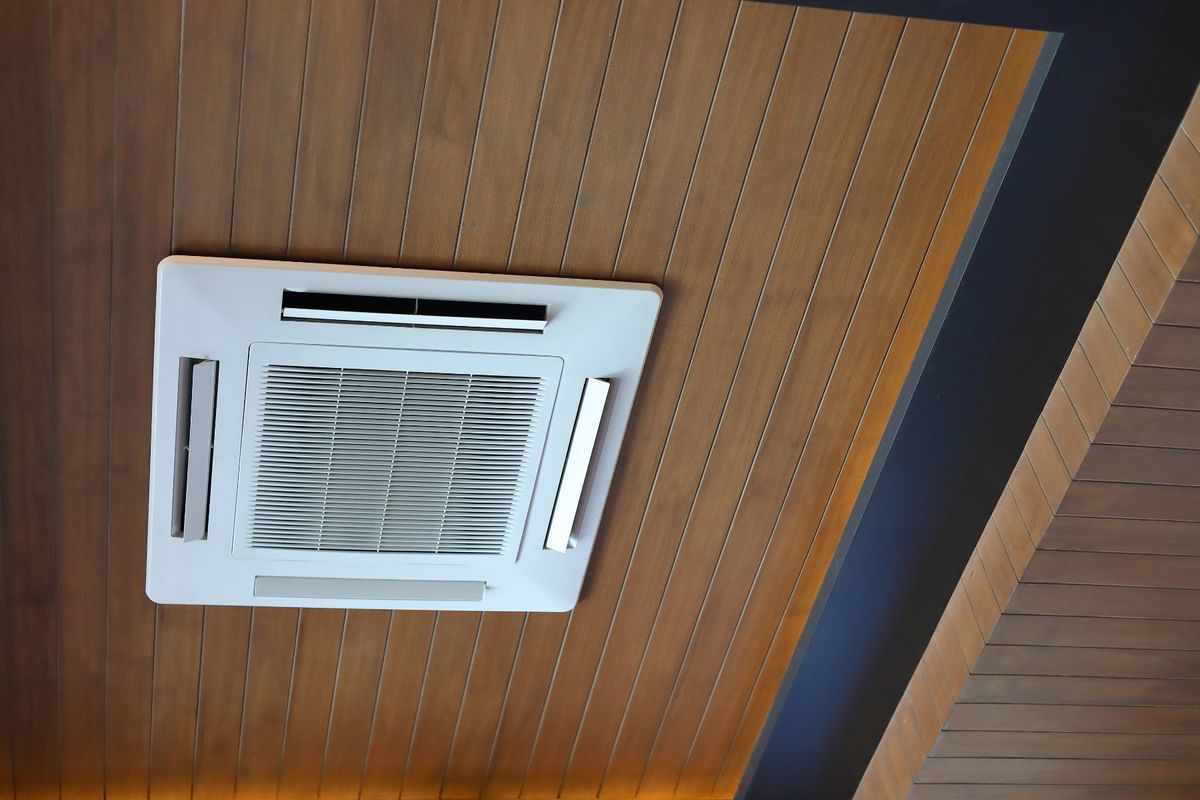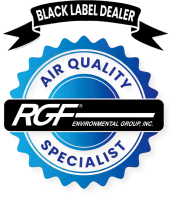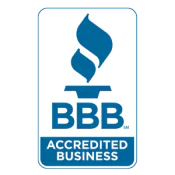There’s nothing more frustrating than walking into your home on a scorching summer day only to discover your air conditioner is blowing warm air. That refreshing blast of cool relief you’re counting on feels more like a disappointing breeze from a hair dryer.
Before you start sweating through sleepless nights or calling for emergency repairs, it’s worth understanding that AC cooling issues are actually quite common and often have straightforward solutions. From simple maintenance oversights to more complex mechanical problems, various factors can cause your air conditioner to lose its cooling mojo.
In this comprehensive guide, we’ll break down how your AC system actually works, explore the most common reasons it might not be blowing cold air, and walk through practical steps you can take to diagnose and potentially fix the issue. Whether you’re dealing with a dirty filter or a more serious component failure, we’ve got you covered.

Understanding How Your Air Conditioner Works
Let’s get real about how these cooling systems keep your home comfortable. While air conditioners might look complex from the outside, they basically work by moving heat from one place to another – it’s not magic, just smart engineering.
Basic Components
Think of your AC system like a relay team, where dropping the baton at any point stops the whole race. Here are the key players:
Inside your home sits the evaporator coil. It’s the cold surface that pulls heat out of your indoor air, much like a frozen ice pack cools whatever it touches.
Out in your yard, you’ll find the condenser coil in that big metal box. Its job? Taking all that indoor heat and dumping it outside where it belongs.
The compressor (also in that outdoor unit) keeps everything moving. It pumps refrigerant through the system while maintaining the right pressure – kind of like your heart pumping blood through your body.
Refrigerant flows through the whole system. But here’s a surprise – it doesn’t make cold air. Instead, this special fluid just moves heat from inside to outside.
Your blower fan does the heavy lifting of moving air across the cold coil and through your home’s ductwork.
The Cooling Process
Here’s what really happens when you hit that thermostat button: Your AC pulls warm air from your rooms and passes it over that cold evaporator coil. The refrigerant inside the coil soaks up the heat like a sponge. That warmed-up refrigerant then heads outside, where the compressor and condenser work together to release the heat into the outdoor air.
This process keeps repeating until your home cools down to match your thermostat setting. Pretty neat, right? When you understand these basics, it’s easier to figure out why your AC might not be cooling like it should.
Common Reasons Why Your AC Isn’t Blowing Cold Air
Let’s dig into the usual suspects when your AC starts acting up. From quick fixes to more serious issues, understanding these common problems helps you know whether to grab a screwdriver or your phone to call a pro.
Thermostat Issues
Before panicking about your AC, take a good look at your thermostat. You’d be surprised how often the fix is as simple as correcting settings that got bumped to “heat” or “fan only.” Dead batteries or wonky wiring can also trick your thermostat into misreading temperatures, leaving you wondering why the cool air won’t kick in.
Dirty or Clogged Air Filters
Here’s a big one that homeowners often overlook. Dirty filters block airflow like a clogged artery, making your AC strain to push air through while delivering less cooling power. Most homes need fresh filters every few months – more often if you’ve got pets or live in a dusty area.
Blocked or Dirty Condenser Unit
Your outdoor unit needs breathing room to dump heat outside. When it gets choked up with leaves, grass clippings, or other yard debris, it struggles to release heat properly. Regular cleaning around your outdoor unit goes a long way toward keeping things running smoothly.
Low Refrigerant Levels
Running low on refrigerant isn’t like running low on gas – it means there’s likely a leak somewhere. Since refrigerant contains chemicals that need special handling, this isn’t a DIY fix. You’ll need a certified tech to track down leaks and restore proper refrigerant levels.
Frozen Evaporator Coil
Ice on your AC might look cool, but it’s a red flag something’s wrong. Whether it’s from airflow problems or low refrigerant, a frozen coil can’t cool your home properly. If you spot ice buildup, shut things down and get a pro to check it out before bigger problems develop.
Faulty Blower Fan or Motor
Without good airflow, even a perfect AC system falls flat. Listen for odd noises or check for weak air from your vents – these hints often point to blower problems that need attention.
Leaky or Blocked Ductwork
Cool air leaking into your attic or crawl space won’t help your living room feel better. Duct problems can waste tons of energy and leave some rooms stuffy while others feel fine. Getting your ducts checked and sealed might be the fix you need.
Aging or Improperly Sized AC Unit
Old AC units lose their punch over time, just like an aging car. If yours is pushing 15-20 years, weak cooling might mean it’s retirement time. Having the wrong size unit causes its own headaches – too big or too small both spell trouble for comfort and energy bills.
Diagnostic Steps for Homeowners
Got an AC that’s not cooling right? Before reaching for the phone to call a repair service, there are several basic checks you can safely do yourself. These simple steps might help you spot the problem – or even fix it.
Safety First
Let’s be clear about something – you need to power down your AC before poking around. Turn it off at both the thermostat and the circuit breaker. Why? Because air conditioners pack some serious electrical punch, and the last thing you want is the system kicking on while you’re checking it out.
Looking Things Over
Start with your eyes. Walk around your outdoor unit and check for:
- Bushes or plants crowding the space
- Piled-up leaves or grass clippings
- Bent or damaged fins
- Signs that critters have made themselves at home
Head inside and pull out that air filter. Hold it up to a light. Can’t see through it? That’s probably your issue right there. A clogged filter makes your AC work way too hard.
Checking Your Thermostat
Your thermostat can trick you into thinking there’s a bigger problem. Make sure:
- It’s actually set to cool (sounds obvious, but you’d be surprised)
- The temperature’s set low enough to kick in
- The screen’s working right
- You’ve got fresh batteries if it needs them
- The fan’s on “Auto” instead of running constantly
Weird Noises
When you power everything back up, listen carefully. Different sounds mean different problems:
- Squealing might be a belt issue
- Banging could mean something’s loose inside
- Clicking (beyond normal) points to control problems
- Hissing or bubbling might mean leaking refrigerant
Write down any strange sounds you hear. If you end up needing a pro, this info will help them figure out what’s wrong faster.
Just remember – these checks are just the beginning. Leave the complicated stuff involving electrical parts, refrigerant, or major repairs to the experts who know what they’re doing.
Troubleshooting and Potential Solutions
Once you’ve identified potential issues with your AC system, it’s time to take action. While some solutions are perfectly safe for homeowners to handle, others require professional expertise. Let’s break down what you can do yourself and when to call in the pros.
Adjusting Thermostat Settings
This is the easiest fix to try first. Double-check these settings:
- Switch the mode to “Cool”
- Set fan to “Auto” instead of “On”
- Lower the temperature setting by 5-10 degrees below current room temperature
- If you have a programmable thermostat, verify your schedule settings aren’t overriding your desired temperature
Cleaning or Replacing Air Filters
Maintaining clean filters is one of the most important DIY tasks for AC efficiency:
- Locate your filter (usually in the return air vent or air handler)
- Remove it carefully, noting which direction the airflow arrow points
- If it’s a washable filter, clean according to manufacturer instructions
- For disposable filters, replace with the same size and efficiency rating
- Mark your calendar to check the filter monthly during peak cooling season
Clearing Debris from the Condenser Unit
With the power off, you can safely clean your outdoor unit:
- Remove any visible debris like leaves or grass clippings
- Gently clean the exterior fins with a soft brush
- Maintain a 2-foot clearance around the unit
- Trim back any encroaching vegetation
- Use a garden hose on gentle pressure to wash away dirt (avoid pressure washers)
Addressing Refrigerant Issues
When it comes to refrigerant problems, your role is primarily identification:
- Look for signs of oil spots around refrigerant lines
- Listen for hissing sounds
- Note if your AC runs constantly but barely cools
- Contact a licensed professional immediately if you suspect a leak
- Never attempt DIY refrigerant repairs – it’s illegal and dangerous
Thawing a Frozen Evaporator Coil
If you discover ice on your indoor unit:
- Turn off the AC immediately
- Switch the fan to “On” to help melt the ice
- Allow 24 hours for complete thawing
- Replace or clean the air filter
- If freezing recurs, call a professional to check refrigerant levels
Repairing or Replacing Faulty Components
When mechanical issues arise:
- Document any unusual sounds or operation
- Don’t attempt repairs on electrical components
- Consider the age and condition of your system
- Get professional diagnosis before deciding between repair or replacement
- Request multiple quotes for major repairs or replacement
Remember, while some troubleshooting steps are DIY-friendly, anything involving electrical components, refrigerant, or major mechanical parts requires professional attention. Attempting these repairs yourself could void warranties, cause further damage, or create safety hazards.
Preventative Maintenance Tips
Let’s face it – nobody wants their AC dying during a summer heatwave. Just like changing your car’s oil prevents engine problems, regular AC maintenance keeps your cooling system running smoothly when you need it most.
Regular Professional Tune-Ups
Think of annual maintenance as your AC’s yearly check-up. Professional technicians do more than just a quick once-over. They’ll inspect how your system’s running, clean dirty components, and spot small problems before they become expensive headaches. They’ll ensure electrical connections are secure and verify your system is cooling as efficiently as possible.
The cost of yearly maintenance is far cheaper than emergency repairs or replacing a burnt-out system too early. Plus, regular service helps maintain your warranty coverage and keeps energy bills in check.
DIY Maintenance Tasks
There’s plenty you can handle between professional visits. Your air filter is like your AC’s lungs – when it gets clogged, your system struggles to breathe. Take a peek at it monthly during summer, switching it out when it looks dirty. Write down when you change it to stay on schedule. If you’ve got pets or allergies, consider upgrading to better quality filters.
Your outdoor unit needs space to breathe too. Clear out leaves and yard debris regularly, cut back bushes and plants, and give it a gentle wash now and then. Most importantly, make sure it’s sitting level on its pad to prevent strain on components.
Good airflow keeps your whole system working right. Move furniture away from vents, dust off your return air grilles, and keep all vents open in rooms you’re using. A quick vacuum around vents occasionally helps maintain proper air circulation throughout your home.
Keep an Eye on Things
You know your AC better than anyone. Pay attention to your power bill – notice if it jumps up suddenly or seems higher than last year. Watch for patterns that seem off from normal operation.
Stay alert for new noises that weren’t there before, rooms that used to cool fine but don’t anymore, or changes in how often your system kicks on and off. Any funky smells deserve attention too, as they often signal developing problems.
Taking care of these basics helps your AC last longer and work better. Plus, you’ll save money on both repairs and energy bills. Pretty good deal for a little attention now and then. Remember, prevention is always easier – and cheaper – than fixing problems after they’ve grown serious.
When to Call a Professional
Look, we all like saving money with DIY fixes. But there’s a big difference between changing an air filter and messing with electrical components or refrigerant lines. Let’s talk about when it’s time to put down the tools and call in the experts.
Signs You Need Help
Your AC will usually tell you when it needs professional attention. If it’s running forever but your house stays warm, that’s a red flag. Same goes for weird grinding or squealing noises that weren’t there before. Burning smells from your vents, water leaking around your indoor unit, or ice building up on the lines – these aren’t DIY territory. And if your circuit breakers keep flipping or your power bills suddenly skyrocket, you’ve probably got bigger problems that need professional tools and know-how.
Finding a Good Tech
Not all HVAC companies are the same. The good ones have valid state licenses, proper insurance, and EPA certification for handling refrigerant. They’ll have a real local shop, not just a van and phone number. Most importantly, they’ll have a solid track record in your area.
When you’re calling around, ask how long they’ve been in business. Get quotes in writing and ask about warranties. Find out who’s actually coming to your house and whether you can talk to recent customers. Good techs explain things clearly, tell you exactly what it’ll cost, and stand behind their work.
Watch out for super cheap prices – they’re usually too good to be true. Be wary of high-pressure sales tactics or companies sketchy about showing credentials. If they only take cash or don’t have a real business address, that’s probably not your best bet.
Good AC work costs money – that’s just how it is. But paying a bit more for quality repairs beats paying twice for cheap fixes that don’t last. Take your time, check out a few companies, and see what other homeowners say about them. The right pro will make sure your AC keeps you cool for years to come.
Enhancing Home Comfort and Energy Efficiency
While fixing your AC’s cooling issues is crucial, there are plenty of ways to boost your home’s comfort and cut cooling costs without putting extra strain on your system. Let’s look at some smart strategies that work alongside your AC.
Supplementary Cooling Solutions
Ceiling Fans Make a Difference
Running ceiling fans while your AC is on isn’t redundant – it’s smart. They help:
- Push cool air down where you need it
- Create a wind-chill effect that makes rooms feel 4-5 degrees cooler
- Mix air to eliminate hot and cold spots
- Use way less power than cranking down the AC
Just remember to switch the blade direction in summer (counterclockwise) to push air straight down.
Beat the Heat at the Windows
Your windows can let in a ton of unwanted heat. Try these fixes:
- Install light-colored blinds or shades
- Add reflective window film
- Close curtains during peak sun hours
- Consider exterior awnings for south-facing windows
Upgrading to Energy-Efficient Systems
When it’s time for a new AC, efficiency matters. Modern systems with higher SEER ratings might cost more upfront but save serious money over time:
- Less energy use means lower monthly bills
- Better humidity control
- Quieter operation
- More consistent temperatures
- Longer system life
Look for these current incentives:
- Federal tax credits for high-efficiency units
- Local utility company rebates
- State energy-saving programs
- Manufacturer seasonal promotions
Most older AC units run at 10 SEER or less, while new systems can hit 20+ SEER. That difference could cut your cooling costs nearly in half.
Remember, the best cooling strategy combines an efficient AC system with smart home management. Small changes add up to big savings over time.
Keep Your Cool with West Des Moines’ AC Pros
Let’s wrap this up – when your AC stops blowing cold air in the middle of an Iowa summer, you need it fixed fast. While you can tackle some issues yourself, others need an expert’s touch to avoid bigger headaches down the road.
Here at Holt Plumbing & Heating, we’ve been fixing AC problems since 1947. That’s over 75 years of keeping West Des Moines families comfortable. Our techs know every AC system inside and out, and we cover West Des Moines and the surrounding areas.
We’re not some big corporate chain. We’re your neighbors, a family business that’s been here since your grandparents’ time. We give free quotes on new systems, offer easy payment plans, and stand behind our work.
Got AC troubles? Don’t sweat it. Let Holt Handle That!
Need help now? Call us at (515) 209-2360. We’ll get your AC blowing cold again.












